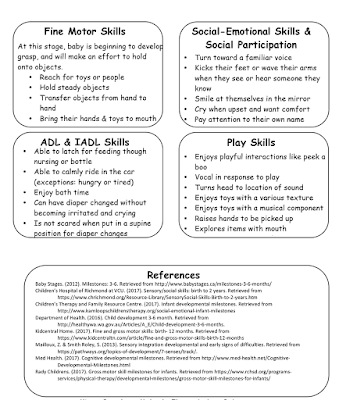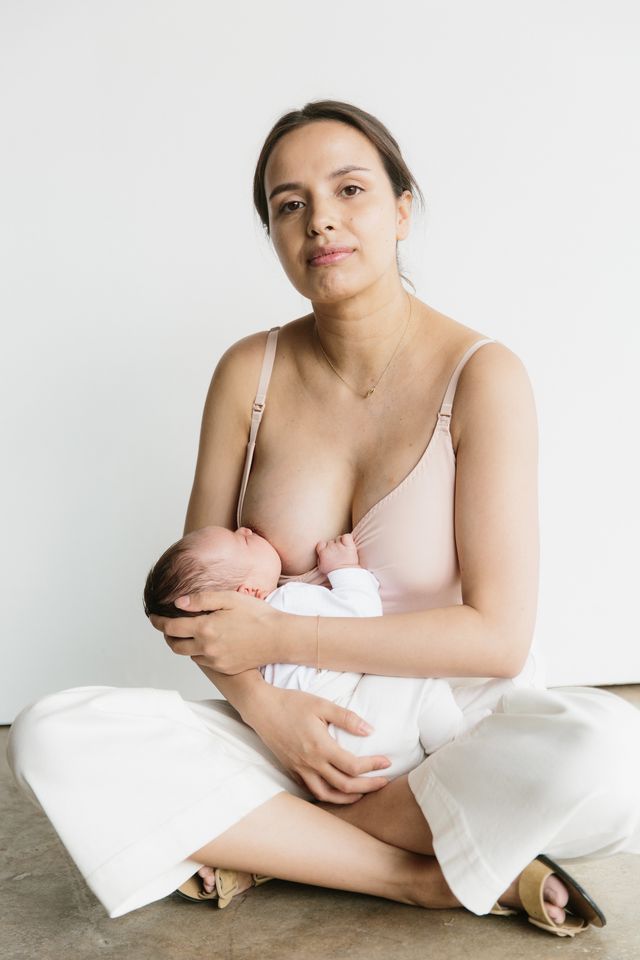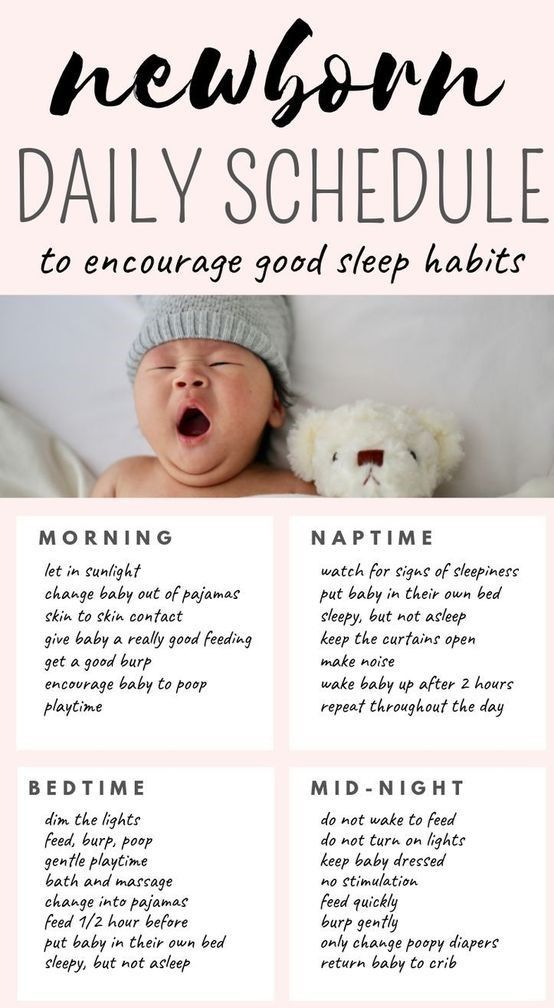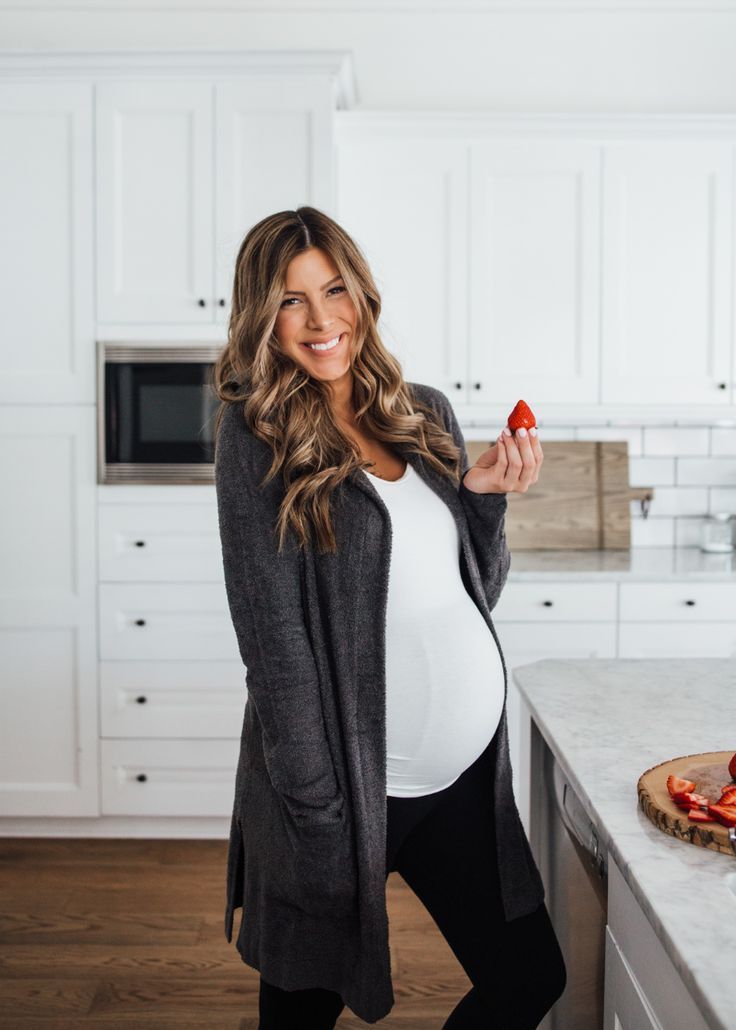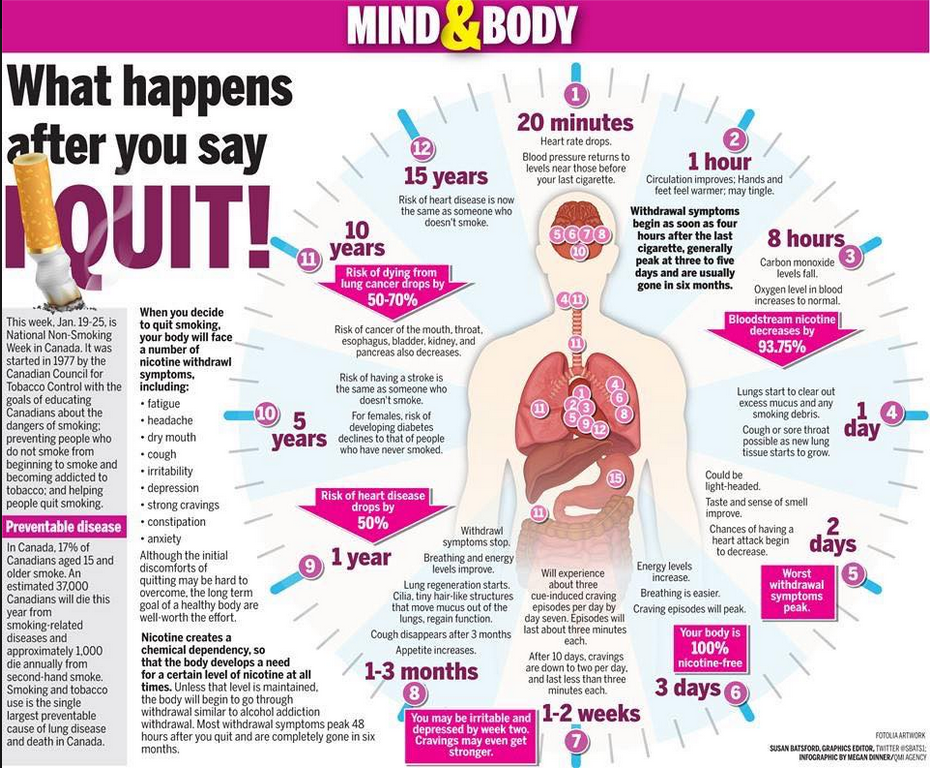Infant motor skill development
Help your Baby Develop Motor Skills
Why Are Motor Skills Important?
Motor skills are essential for baby's physical strength and movement
Motor skills are used everyday throughout our lives. They help us move and do everything from lifting heavy items to typing on a keyboard. Motor skills and motor control begin developing after birth, and will progress as children grow.
Having good motor control also helps children explore the world around them, which can help with many other areas of development.
Motor skills are broken up into two categories: gross motor skills and fine motor skills. Mastering both are important for children’s growth and independence.
Gross motor skills are movements related to large muscles such as legs, arms, and trunk.
Fine motor skills are movements involving smaller muscle groups such as those in the hand and wrist.
Watch the Parents' Guide to Fine Versus Gross Motor Skills:
Motor Skills: Know the Basics
Why does my child need motor skills?
- To be able to move and complete tasks independently
- To be able to explore the world around them, which promotes cognitive, speech, and sensory development
- To give them confidence and independence, which promotes skills such as executive function
- To meet developmental milestones
- To possibly help prevent early motor delays and conditions that can interrupt development
When should my baby start developing motor skills?
As a newborn! They will begin developing core motor skills as soon as they start moving. Sign up for the Baby Games Calendar or visit our Baby Games page to learn more about the physical activities that are age-appropriate for your little one, to help them make progress on their motor skills every week.
How often should my child work on their motor skills?
The short answer: every day!
As they get older, your little one will be working their motor skills every day just by going about their daily routine and getting more involved in activities! However, for infants and toddlers, they may need extra stimulation to work their motor skills. Make sure you are encouraging physical movement and development of these skills on a daily basis.
What are some important motor milestones?
All motor milestones are important! Which means it’s crucial to ensure your baby is meeting their milestones. You can find all motor milestones or learn more from the Assure the Best brochure.
The achievement of one milestone tends to lead to another.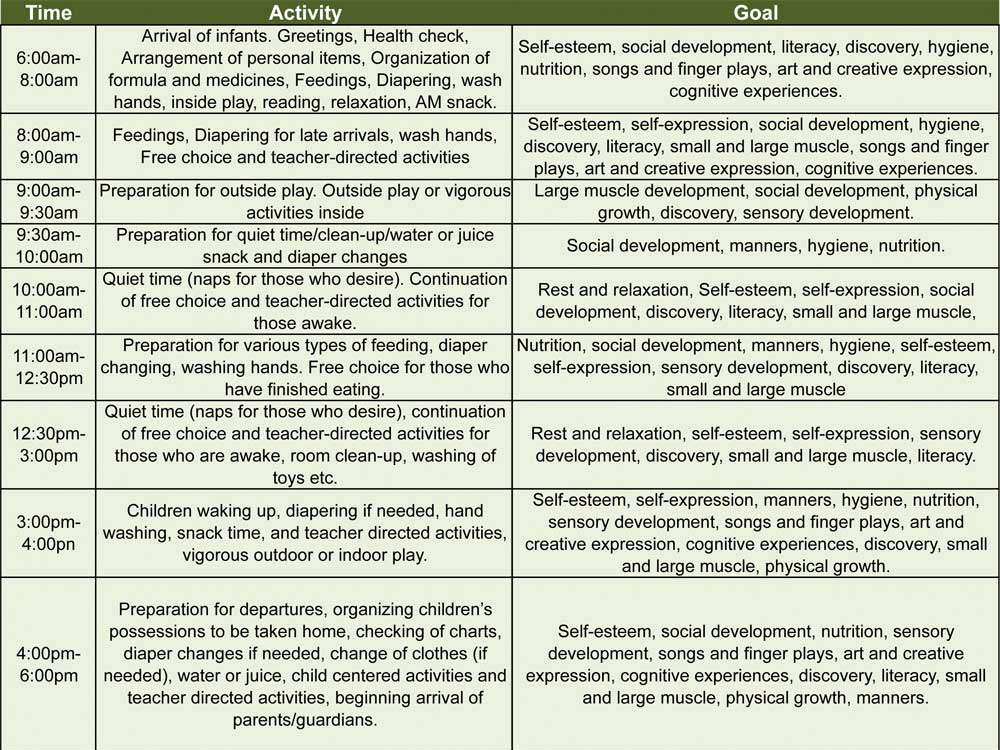 So for example, while babies typically do not crawl until 7-9 months, they achieve plenty of other milestones before that so they have the strength and confidence to crawl.
So for example, while babies typically do not crawl until 7-9 months, they achieve plenty of other milestones before that so they have the strength and confidence to crawl.
Learn more about encouraging your baby to crawl!
Motor Milestones
Check off your baby’s motor milestones with our helpful and FREE brochure and checklist!
Learn more about baby's motor milestones with the Assure the Best brochure.
Download the Brochure
The Milestone Checklist helps parents keep track of their children’s motor, sensory, communication and feeding milestones, from birth to 3 years old. Also available in multiple languages.
Download the Checklist
Why Sleep Matters for Motor Skills
Changing baby's sleep direction can help strengthen baby's neck muscles and head control
Changing head direction can help prevent positional plagiocephaly (flat head) and positional torticollis, by encouraging baby to move their head and strengthen both sides of their neck.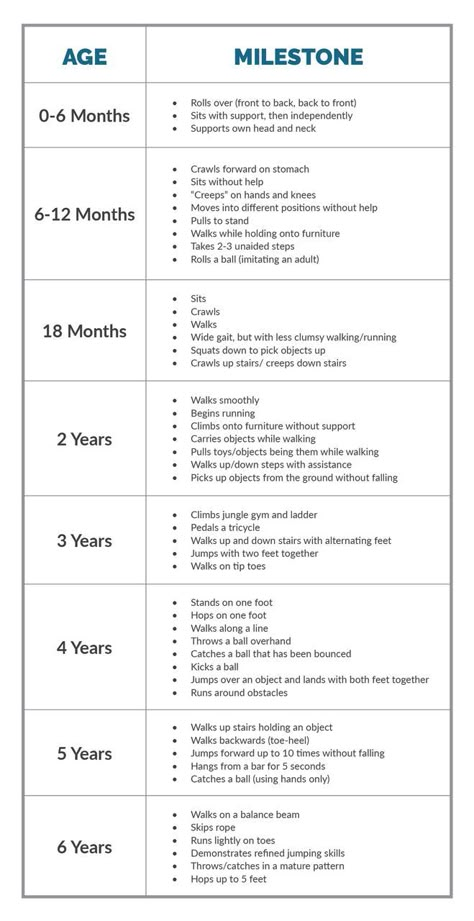 When baby faces different directions as they lay, they also vary the direction they turn their head in response to a noise (such as a parent entering the room). This strengthens neck muscles more evenly on both sides, and changes the places where baby puts pressure on their head as they lay.
When baby faces different directions as they lay, they also vary the direction they turn their head in response to a noise (such as a parent entering the room). This strengthens neck muscles more evenly on both sides, and changes the places where baby puts pressure on their head as they lay.
Learn More
Motor Activities
Great ways for children to work their motor skills every day!
Much of your child’s fine and gross motor development can happen right at home! Learn more about some ways to keep them moving every day.
Help baby make progress on their motor skills every week!
Sign up for the Baby Games Calendar or visit our Baby Games page to learn more about the physical activities that are age-appropriate for your little one.
Sign Up Today
What to Watch For
What are some behaviors to watch out for that could affect my child’s motor skills?Children outgrow many of the behaviors that can interrupt motor development.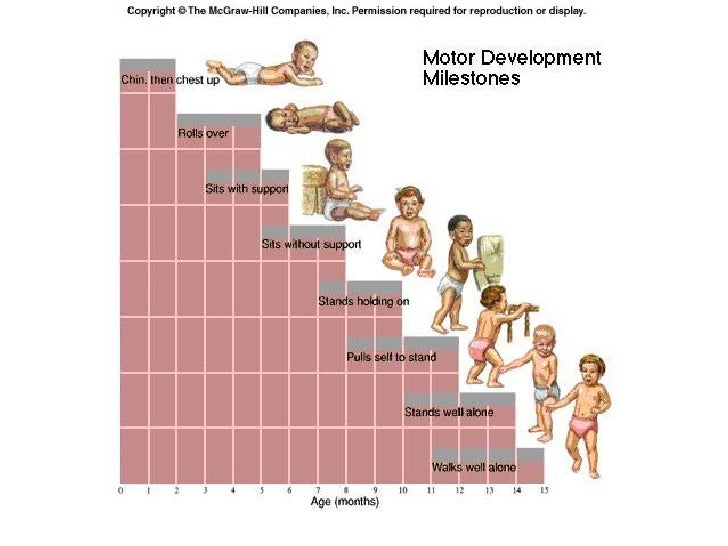 Some common ones to watch out for include:
Some common ones to watch out for include:
- Toe-Walking
- Chewing on items they shouldn’t be chewing on
- Falling often or having trouble lifting their head
- W-Sitting
Watch to see what w-sitting is and why it matters:
Typical and Atypical Motor Development
Motor behaviors that should be addressedWhat do typical and atypical development look like? What should it look like when baby begins to sit, crawl, and walk? In the below graphics, see what typical and atypical development look like. Typical development is in blue, and means baby is right on track; atypical development is in yellow, and means that baby may have a motor delay.
If you suspect a motor delay, reach out to baby’s healthcare provider to find out what may be causing this delay. Early intervention is essential for addressing development issues and preventing further delays.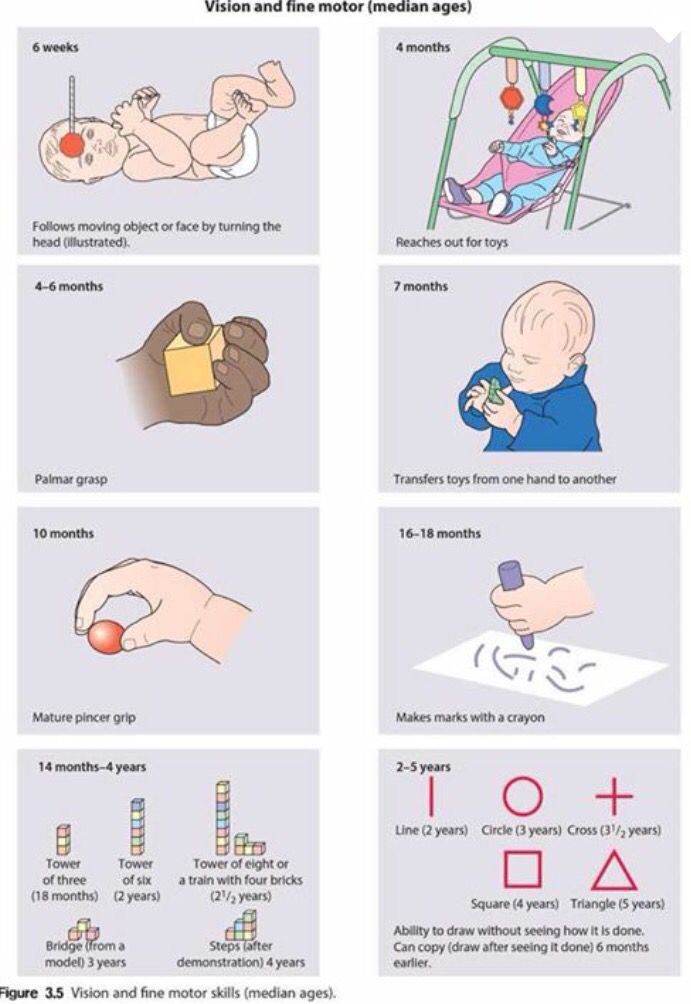
Child Milestone Checklists For All Ages
All AgesJump to Section
Downloadable Milestone Checklists for Babies and Children Milestone Checklist Ability Checklist Communication Checklist Feeding Checklist More Resources
Downloadable Milestone Checklists for Babies and Children
Make sure baby is meeting their milestones with our helpful checklists! The Milestone, Ability, Communication, and Feeding checklists help those caring for baby to know that they are developing and on track.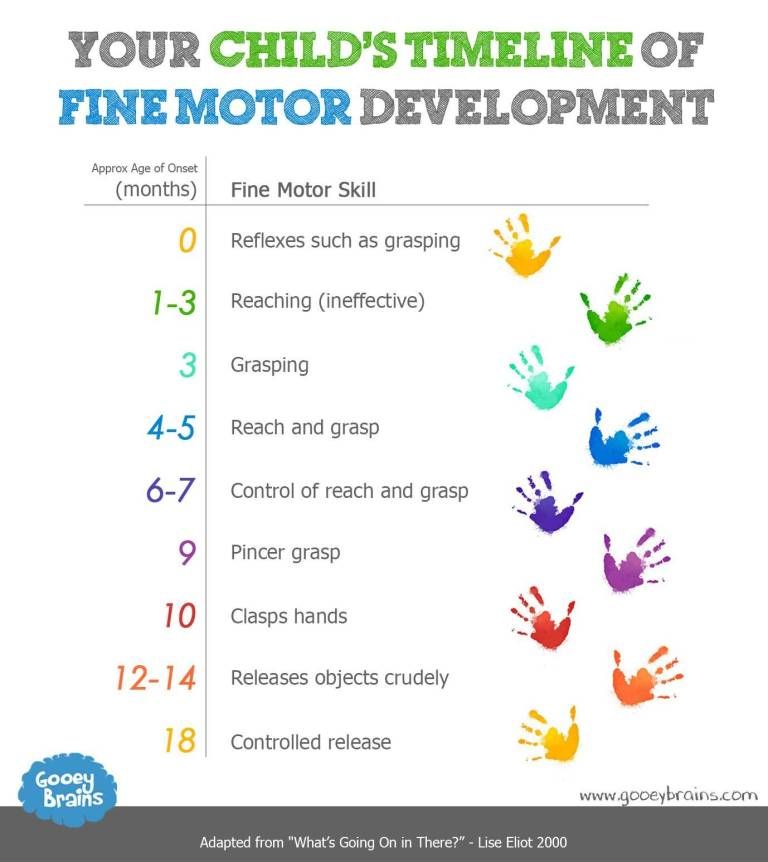
Each checklist takes your through various health topics and the milestones or abilities baby should be reaching at each age range. You can keep up with your baby’s development for months—and even years—to come.
What are developmental milestones?Developmental milestones are behavioral or physical checkpoints seen in infants and children as they grow and develop. All of our developmental milestones are validated by findings from health professionals and American Academy of Pediatrics findings.
Order Baby's First Year Milestone Guide
Why is it important to track baby’s milestones?It’s important to keep track of baby’s development through the milestone checklists so you can:
- Understand the key indicators of infant health and development
- Learn the signs of early developmental delays
- Provide or seek out the right resources for children based on their unique needs
- Ask the right questions to healthcare professionals about baby’s progress
Be sure to adjust for prematurity.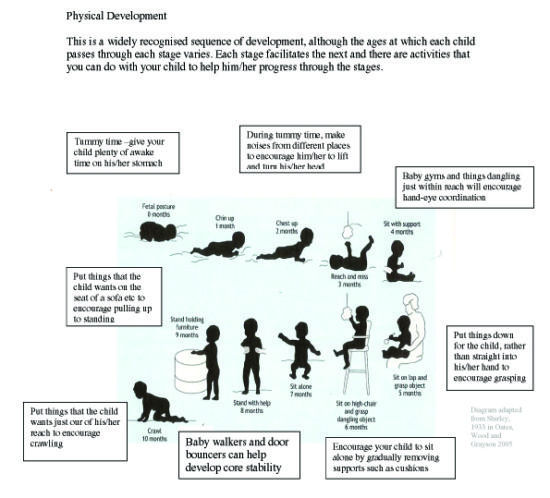 If your child is missing any milestones, be sure to talk with your healthcare provider.
If your child is missing any milestones, be sure to talk with your healthcare provider.
Here’s how you can use this checklist:
- Print or download the checklist as a PDF.
- Save this somewhere that is easy to access, and check in every few weeks to see if baby reaches any new milestones or abilities!
- Share this page or our milestone checklists with friends, family, or anyone else caring for your baby.
- Bring the checklists to visits with healthcare providers, and ask about developmental milestones or abilities that baby hasn’t yet checked off.
Milestone Checklist
Age range: birth to 3 years old
Check off your child’s milestones as they reach them, to know more about your baby’s development! Our developmental milestone checklist is sorted by age and four topics: motor, sensory, communication, and feeding. This makes it easy to find and track the most important child development information!
English
Español
Croatian
Greek
Serbian
Ability Checklist
Age range: birth to 3 years old
Are you wondering what your child should be able to do at a certain age? Perhaps you’re wondering when baby will explore objects or develop hand eye coordination. Download the ability checklist to track these abilities and find out!
Download the ability checklist to track these abilities and find out!
This checklist is sorted by age and four topics: play and social skills, coordination, daily activities, and self-expression. These core topics help in several areas of your child’s development, including the development of executive function skills.
English
Español
Finnish
Greek
Polish
Serbian
Communication Checklist
Age range: birth to 6+ years old
When should baby say their first words? When can you begin to have a conversation with your toddler? Use this checklist to track the communication development of infants and toddlers.
English
Español
Greek
Serbian
Turkish
Feeding Checklist
Age range: birth to 1 year old
Feeding is so important for baby, but it takes time and motor development before they’re ready for different foods.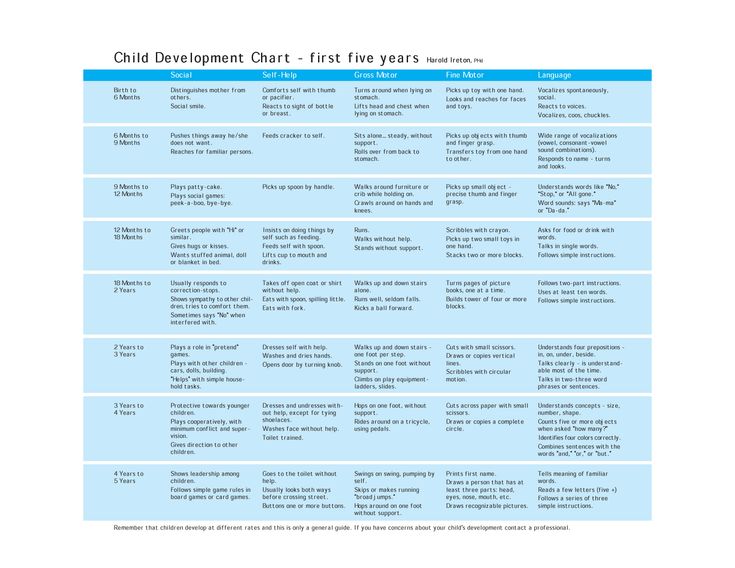 This checklist answers common questions like:
This checklist answers common questions like:
- When is baby is ready for finger food?
- If baby starts to sit, what are the best foods for them to eat?
- If baby starts solids, do they still need to nurse?
Use our checklists for feeding tips and guidance on which foods to give your baby!
English
Español
Greek
More Resources
Browse our website for additional resources to maximize your child’s motor, sensory, feeding, and communication development!
- Topics pages: Covering a wide variety of health topics for your baby’s developmental milestones.
- Videos: Showing developmental milestones in action and giving helpful parenting tips through our Parents’ Guide videos.
- Blog posts: In-depth and healthcare professional-approved articles providing important health info to help learn the signs of a delay and when to request an appointment to talk to your doctor.

- Baby’s First Year Milestone Guide: This helpful guide is a milestone checklist for infants. Keep track of your baby’s developmental milestones through this organized, color-coded, and compact guide. The ultimate resource center for baby’s development!
- The Baby Games Calendar: If baby enjoys playing, then check out these fun games for infants and toddlers! Baby Games make caring for your baby engaging and interactive, helping with everything from language development to hand eye coordination.
How to develop fine motor skills in a child
Today we will look at what fine motor skills are, its features, ways of development using games and toys as examples, as well as the optimal age to start its development. Why is this issue getting so much attention? Let's figure it out together.
Article content:
- What is fine motor skills
- Features of the development of fine motor skills
- Games and exercises aimed at developing fine motor skills
- Lessons for the development of fine motor skills in children
- Fine motor toys
- At what age should you develop fine motor skills
- Terminals
What is fine motor skills
Fine motor skills are the sequence and precision of movements required to perform various actions with small objects using the hands, fingers and toes.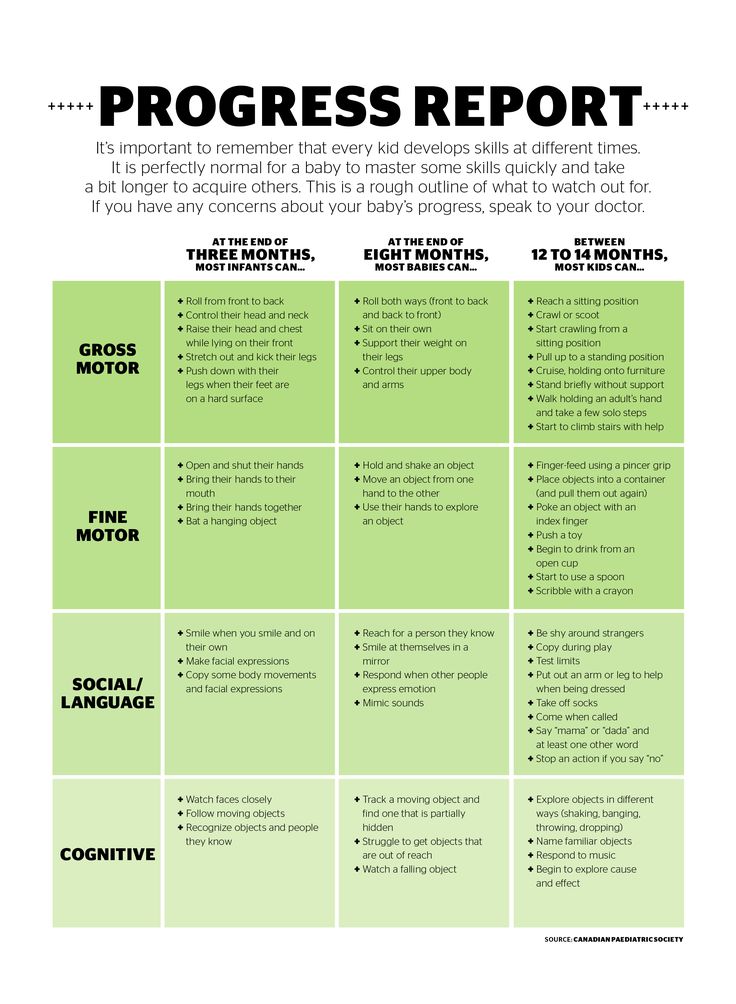
Fine motor skills can be traced in children from an early age, when they are just learning to hold a toy. First comes the development of the hand, finger movements, then the formation of speech is formed. The formation of speech through the development of fine motor skills occurs due to the influence of nerve endings on the brain regions responsible for motor skills and speech, which are located next to each other. nine0003
In addition to the main function - the development of speech - fine motor skills affect the development of mental processes: thinking, memory, imagination, ability to orientate in space.
Features of the development of fine motor skills
The ability to master fine motor skills in children does not develop by itself, that is, it does not have a hereditary factor. Of great importance in this matter are adults who, by their example, involve the child in various activities, develop him systematically and purposefully. This hypothesis was first put forward by the Russian scientist Ivan Mikhailovich Sechenov.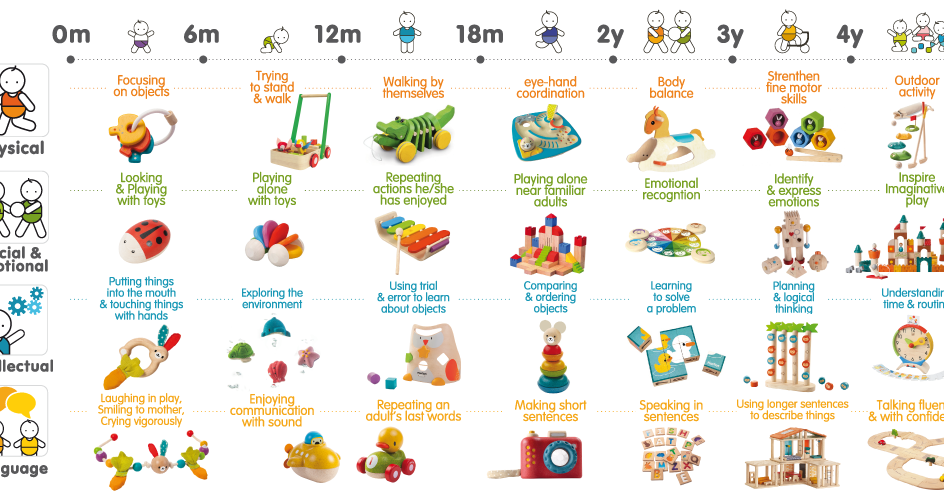 Subsequently, other scientists, doctors, teachers and specialists in various fields began to focus on this opinion as a key one. nine0003
Subsequently, other scientists, doctors, teachers and specialists in various fields began to focus on this opinion as a key one. nine0003
Why is such attention paid to the development of fine motor skills? For children, it means the formation of basic skills and abilities.
- The speech of the child is formed, which contributes to a comfortable stay in the children's team.
- Skills of various movements are developed. The child can play with toys on his own without distracting an adult.
- Self-care skills are strengthened. The child acquires the ability to independently hold a spoon, tie shoelaces, fasten buttons and other items on clothes. nine0012
- Social bonds are established with peers and adults through the ability to communicate clearly and maintain dialogue.
- Readiness to study at school is formed in the aggregate of all the above reasons.
Games and exercises aimed at developing fine motor skills
The main activity of preschool children is play.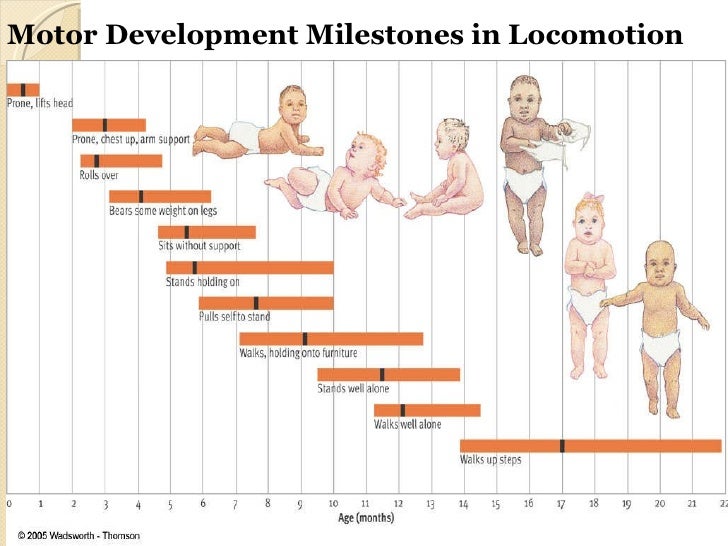 We have selected for you a variety of games and exercises, among which you are sure to find something that suits you and your child. nine0003
We have selected for you a variety of games and exercises, among which you are sure to find something that suits you and your child. nine0003
- Folding toys. We put a transparent container in front of the child and put small toys separately. We suggest putting the toys in the container with your right hand. Then we pour them back, and ask you to repeat the same steps with your left hand.
- Games with cereals. In one container, mix two types of cereals, for example, rice and buckwheat. It is necessary that the child spread these cereals into different containers. You can complicate the game by adding other small items to the cereal mixture, such as beads, buttons, pebbles. nine0012
- Paper tearing exercise. First, we draw arbitrary lines on a sheet of paper. We offer the child to tear the paper with his hands exactly along the drawn lines. You can complicate the task by depicting geometric shapes.
- Page turning exercise. As the child grows older, instead of tearing a sheet of paper, you can offer to flip through the pages of your favorite book.
 This exercise also encourages the child's early interest in reading literature. nine0011 Smooth out wrinkled paper. We put a crumpled sheet of paper in front of the child and offer to smooth it so that not a single bent corner remains. You can complicate the exercise by offering to perform it with one hand, while holding the sheet with your thumb.
This exercise also encourages the child's early interest in reading literature. nine0011 Smooth out wrinkled paper. We put a crumpled sheet of paper in front of the child and offer to smooth it so that not a single bent corner remains. You can complicate the exercise by offering to perform it with one hand, while holding the sheet with your thumb. - Dice games. We give the task to collect various figures from cubes: a tower, a house, a car, etc. Pyramid rings are also suitable for these games. Tasks become more difficult as the child masters the construction of simple figures. nine0012
- Lacing games. Available in various options. It can also be an unnecessary shoe that can be given to the child to lace up and unlace. It can also be a card in which holes for laces are made. In any case, the actions with these items are the same and have one goal - to teach the child to cope with the laces on their own, since this skill will be useful to him in the future.
- Exercises with counting sticks.
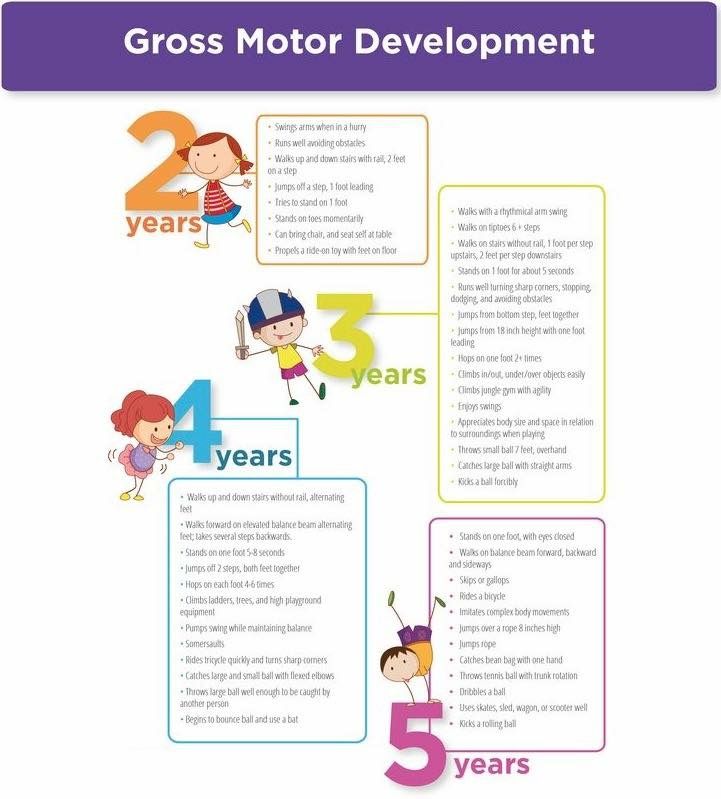 Please lay out geometric shapes on the table. First, the child performs tasks according to the model, and then independently according to verbal instructions. An additional plus of this exercise is the formation of elementary mathematical representations. nine0012
Please lay out geometric shapes on the table. First, the child performs tasks according to the model, and then independently according to verbal instructions. An additional plus of this exercise is the formation of elementary mathematical representations. nine0012 - Games with covers. Here you can offer various containers and vessels with lids that the child will independently twist and unscrew. And if you tell your child that you can’t cope without him, you will give a motive to become your main assistant.
- Finger painting in the sand. Invite the child to draw with all fingers alternately geometric shapes or any other pattern that he wishes. Interaction with sand also has a positive effect on the central nervous system. nine0012
Lessons for the development of fine motor skills in children
In addition to games for the development of fine motor skills, you should engage in a variety of activities that children will undoubtedly like:
- modeling from plasticine, clay or dough;
- drawing or coloring with paints, pencils, crayons;
- construction from kits, paper, cubes;
- crafts made of paper, natural or waste materials; nine0012
- stringing beads, buttons on a string;
- mosaic picking;
- ball games;
- peeling fruits, e.
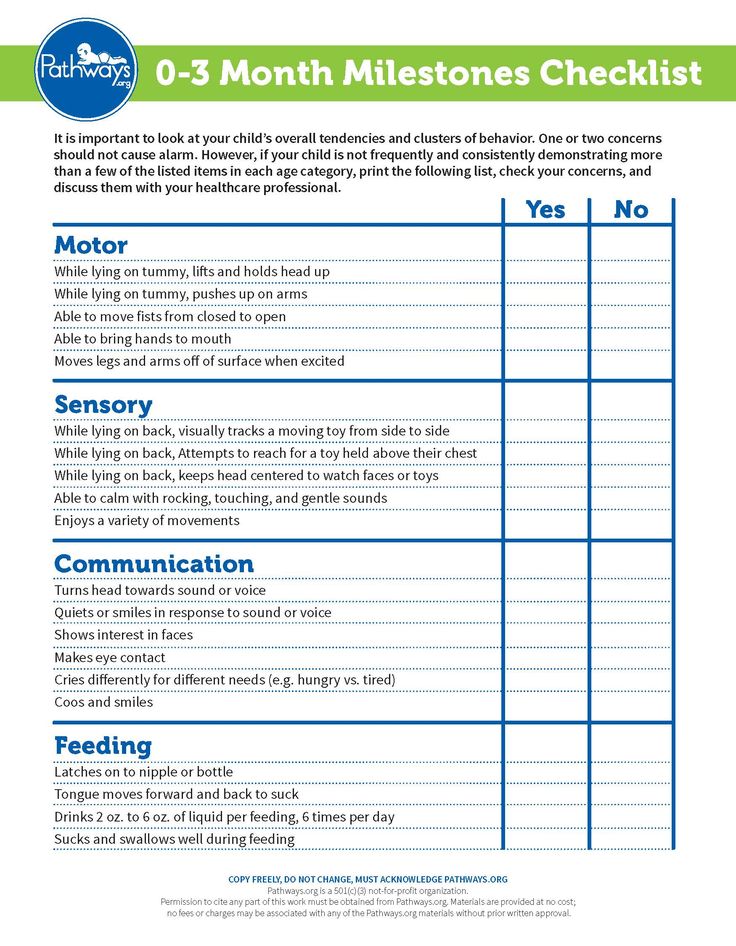 g. tangerines;
g. tangerines; - work with special manuals-copybooks.
Fine motor toys
What could be better for a child than a new toy? Only a toy that contributes to its comprehensive development.
- Massage embossed foot mats. Ideal to use after waking up to tone the body. You can purchase a puzzle mat that he can assemble and disassemble on his own. If you want to focus on the development of cognitive skills, you can purchase a rug with numbers or letters. nine0012
- Magnets. Place the magnets on the refrigerator or a special magnetic board. The child will definitely be interested in them, and will independently move them on the surface. Depending on the goal pursued, you can purchase magnets of various shapes, for example, in the form of numbers.
- Kinetic sand. Tactilely pleasant not only for children, but also for adults. Such sand does not get your hands dirty, so it will become a favorite toy for children and an assistant for adults.
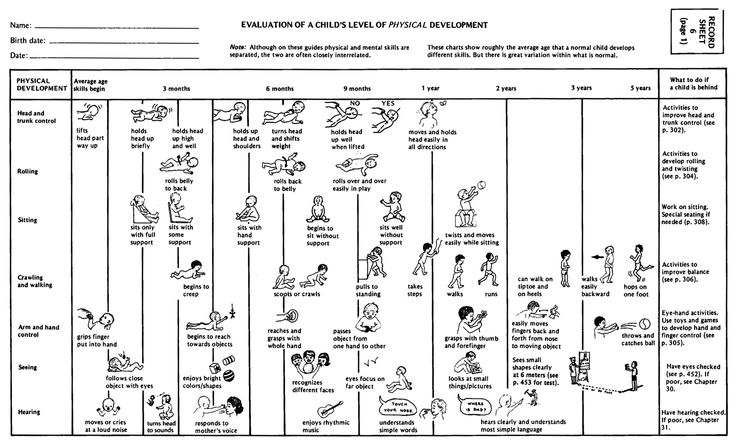
- Easel for drawing. There are options for easels on which you can draw on both sides: on the one hand - with special crayons, and on the other - with paints. nine0012
- Massage balls. Perfect for finger games. Thanks to the spikes, they actively affect the areas of the palms and fingers.
- Constructors. You can choose a set from any manufacturer. You should focus on safety for the child, age and gender. In addition to the development of fine motor skills, it stimulates the development of modeling and design skills.
- Finger Theatre. It combines the possibilities of the comprehensive development of the child. In addition, it improves the expressiveness of speech, memory, imagination, acting skills. This option should definitely be used if you notice that one hand is more developed than the other. nine0012
- Busyboard. Recently a popular manual for the development of fine motor skills. It is a wooden structure, on which various objects are attached on both sides.
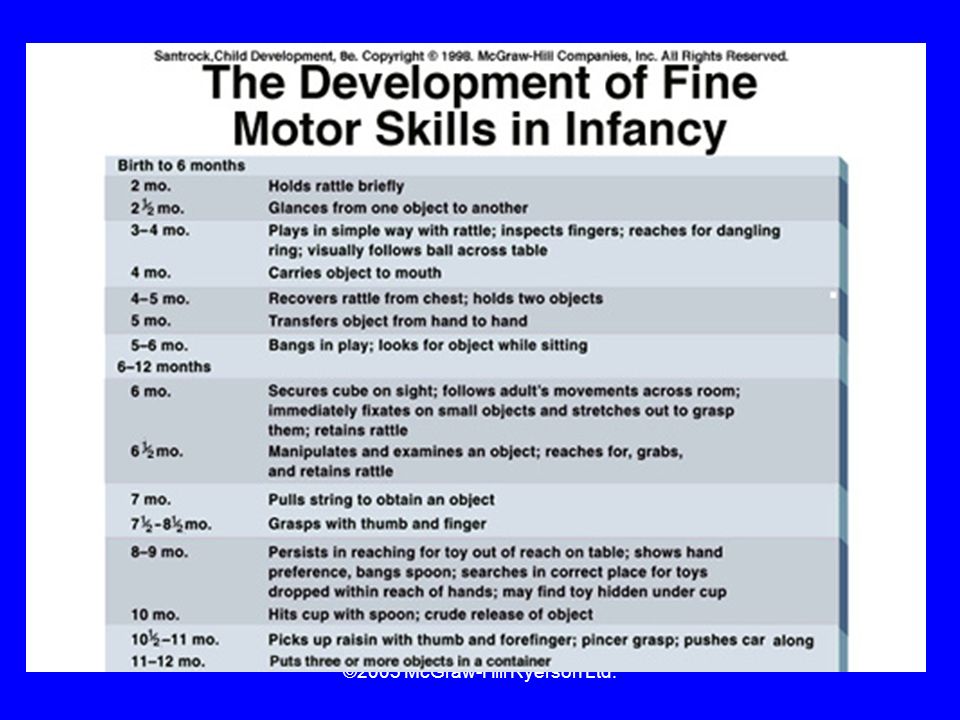 These can be laces, caps, locks, switches, gears, etc. Such a toy will help parents, as the baby can play it independently and safely.
These can be laces, caps, locks, switches, gears, etc. Such a toy will help parents, as the baby can play it independently and safely.
At what age should one develop fine motor skills? nine0003
It is important to pay attention to the motor skills of the hands for at least a few minutes every day.
- For children from nine months of age, pick up large items such as beads or pyramid rings.
- At the age of 1 year, you can organize games with natural materials: sand, clay, cones, pebbles, etc.
- After 2 years, the baby will be happy to do finger exercises with an adult. Saying various nursery rhymes along with hand movements will help to teach hand and tongue coordination. And also better remembered by the child himself. nine0012
- After 3 years, paper exercises should be used. Usually, by these years, the baby has mastered the skill of working with scissors, so it becomes possible to model applications.
- And from the age of 4-6, origami is mastered as one of the most difficult types of paper games.
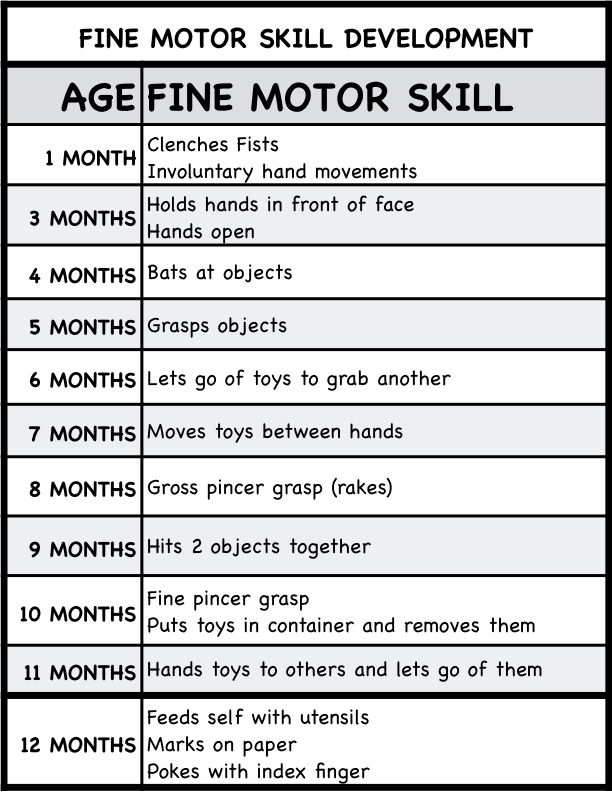
At whatever age you are engaged in the development of fine motor skills in children, it is necessary to organize this activity so that it brings not only benefit, but also pleasure to the child. nine0003
Conclusions
In the age of technological progress and the early use of phones, tablets and computers by children, other aspects of child development are regressing. And, first of all, speech suffers. The relationship between fine motor skills and speech, as well as the development of mental processes, has already been established.
Systematic work on the development of fine motor skills is necessary throughout the preschool period, since by the age of seven the brain areas responsible for its development have already been formed. A child, going to school, should be prepared for new loads, in particular, for mastering writing skills, and not learning how to hold a pen or pencil correctly. Lack of basic skills can lead to unstable self-esteem, inability to build social connections, and poor academic performance.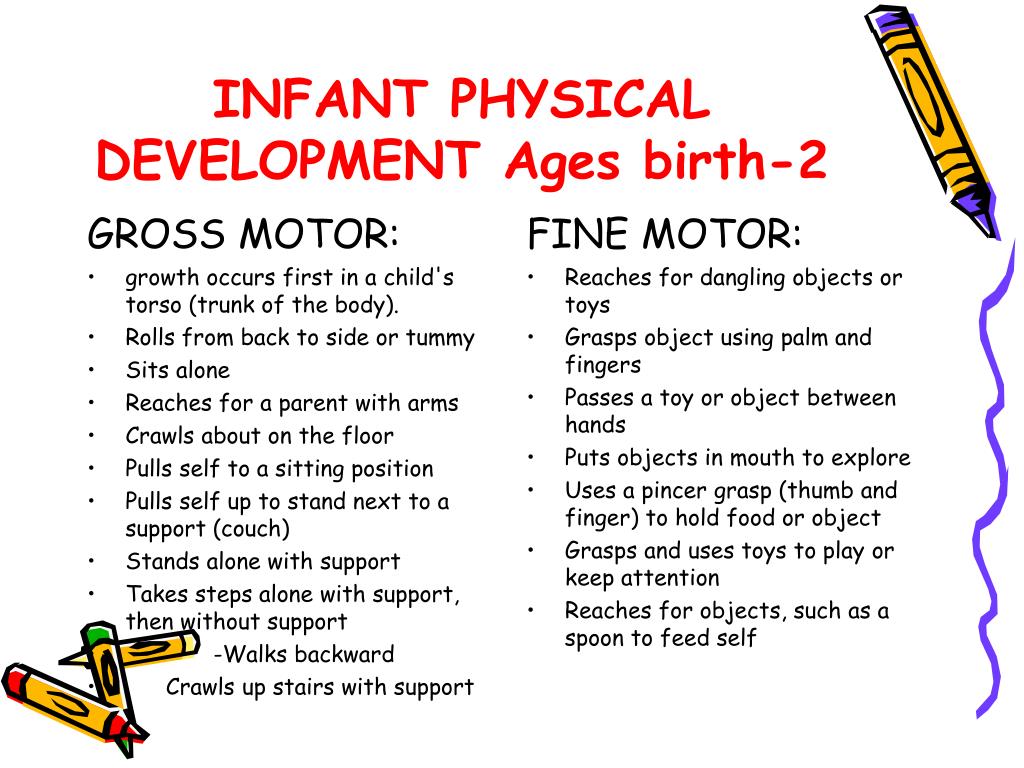 nine0003
nine0003
The network of children's development centers "Baby Club" will be happy to help in the development of fine motor skills of your child. A developing object-spatial environment, highly qualified specialists who love their work with all their hearts, and cozy groups will not leave anyone indifferent.
General development classes or specialized programs - the choice is yours. Contact us if your goal is to raise a developed, open, free, inquisitive little man.
Development of fine motor skills of hands in children
PreviousNext
- Why is motor development so important?
- How does gross motor development work?
- How can I help develop gross motor skills?
- How does fine motor skills develop?
- How to develop fine motor skills?
- Can poorly developed motor skills speak of health problems? nine0012
Contents:
Our whole life consists of movements. Preschool age is an absolutely amazing time in this respect: in an insignificantly short period of time, the baby learns to control his body and makes a huge leap in development. Only after being born, the baby is not even able to turn on its side, and it will not even take two years for it to skillfully wield a spoon and sculpt from plasticine. In this article, we will talk about how the formation of large and fine motor skills occurs in young children, why it is so important, what methods, exercises and games will benefit the child in mastering motor skills. nine0003
Preschool age is an absolutely amazing time in this respect: in an insignificantly short period of time, the baby learns to control his body and makes a huge leap in development. Only after being born, the baby is not even able to turn on its side, and it will not even take two years for it to skillfully wield a spoon and sculpt from plasticine. In this article, we will talk about how the formation of large and fine motor skills occurs in young children, why it is so important, what methods, exercises and games will benefit the child in mastering motor skills. nine0003
Why is motor development so important?
Motor skills are the foundation of most activities. It is they that allow us to do almost everything - from lifting heavy objects to typing on the keyboard, so the question of why develop motor skills is not worth it. Motor skills and motor control begin to develop after birth and will progress as children grow, especially rapidly during the early preschool years.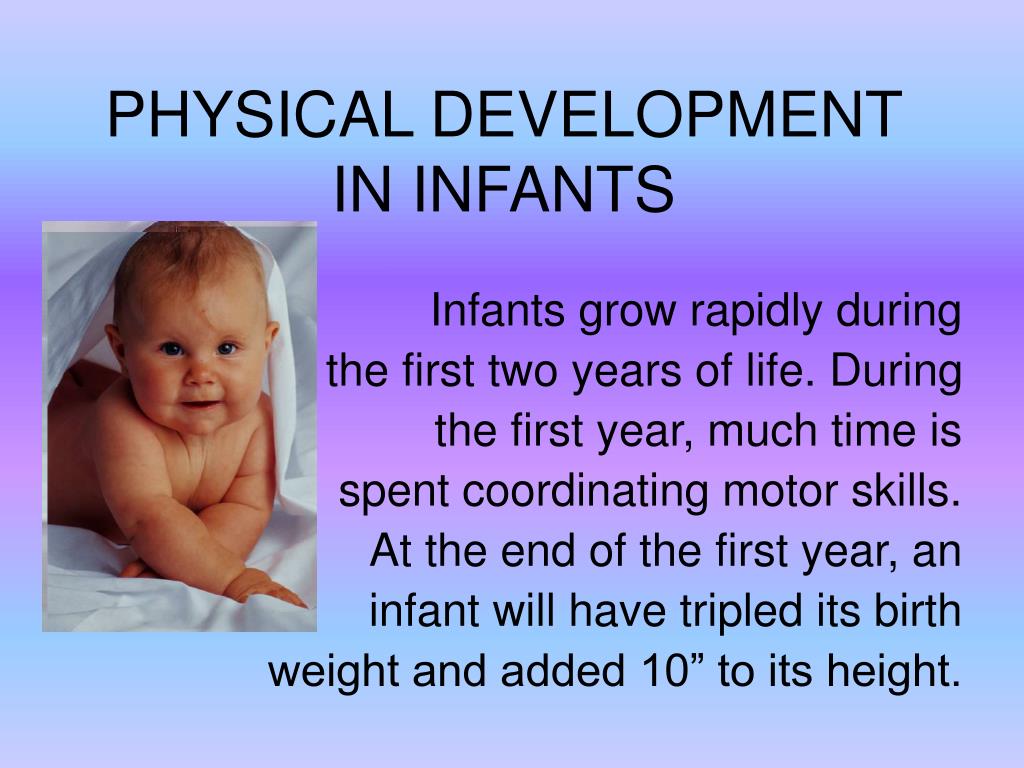
Good motor control also helps children explore the world around them, which can help in many other areas of development. nine0003
There are many works that are devoted to the study of the relationship between the development of motor skills and intellectual development.
All movements are divided into two categories: gross motor skills performed by the large muscles of the body, and fine motor skills performed by the muscles of the hands. For the development of the child, the harmonious development of both types of skills is important. That is why developing activities for kids are so important.
How does gross motor development occur?
Gross motor skills are the foundation of any movement needed in daily life. Thanks to the work of the large muscles of the body (muscles of the arms, legs, torso), walking, standing and sitting, running, jumping are performed; this also includes cycling, swimming, throwing objects, hitting the ball, self-care skills, and much more.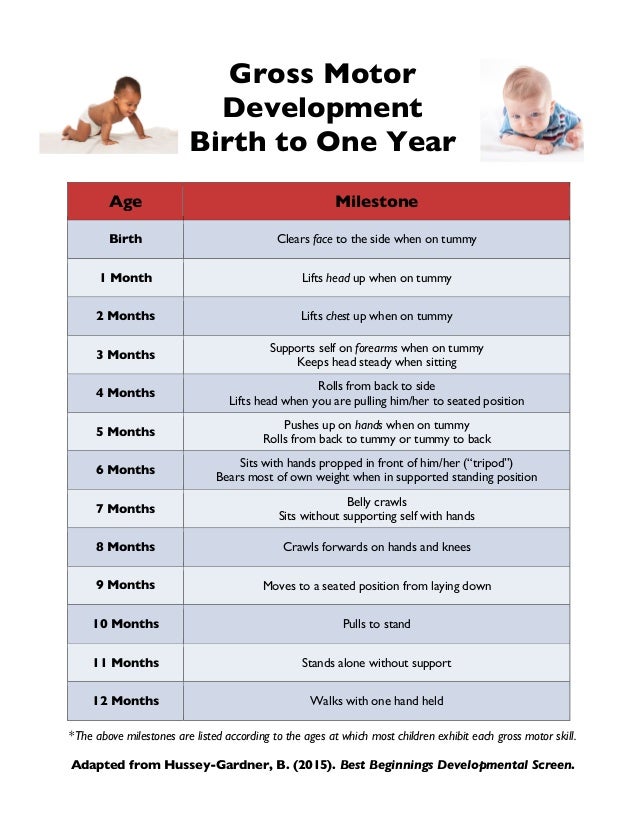 nine0003
nine0003
It is thanks to well-developed gross motor skills that success can be achieved in the development of finer and more precise movements. For example, if a child does not sit well, this violation will become an obstacle to drawing, other developmental activities and games at the table.
The first thing young children learn is to hold their heads confidently. The more often mom or dad put the baby on their stomach, the better they master this skill. Then coups become available to them. From about 2–3 months old, children have a desire to shift their body weight first to their side, and then to their stomach. Later, they also master the reverse exercise - a flip from the stomach to the back. nine0003
By learning to roll over well and quickly, young children explore the world while lying on their stomachs. The more freedom they feel, the more interesting it is for them to master new gross and fine motor skills. The fact that children who spend a lot of time on the floor begin to crawl and sit up faster is due to the fact that parents do not restrict their movements and movements for fear that they will fall.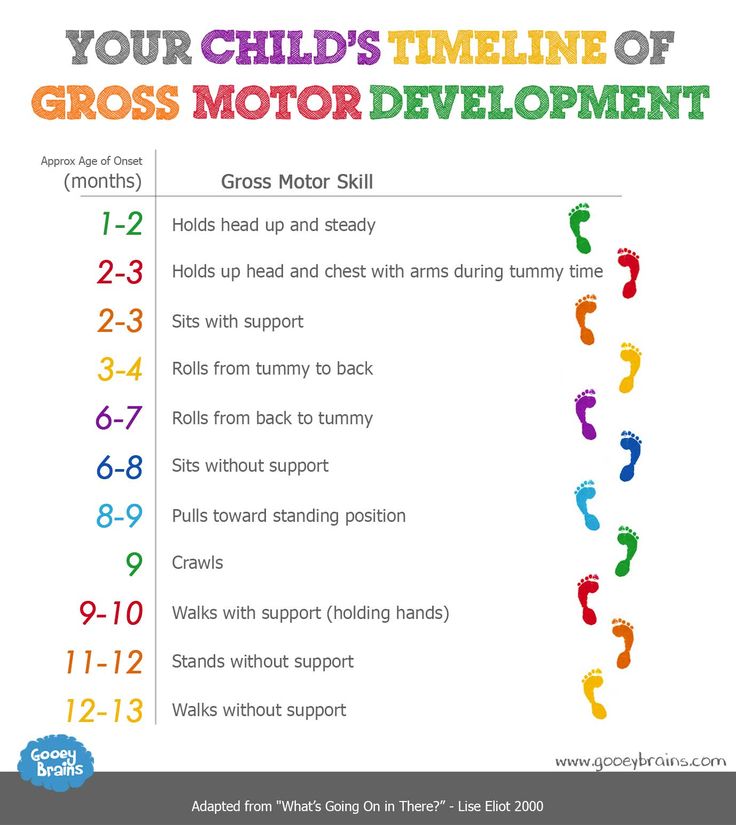 And rightly so, because thanks to such games and exercises, the child has the opportunity to explore the world in full! nine0003
And rightly so, because thanks to such games and exercises, the child has the opportunity to explore the world in full! nine0003
Feeling confident in their abilities, young children try to master and explore new boundaries: they want to move not only with the help of coups, but also by crawling. Someone starts this stage by crawling on their bellies, someone immediately proceeds to crawling exercises on all fours. It is difficult to give an exact age for mastering this gross motor skill, but on average, at 6–8 months, children already know how to crawl. In parallel with this, the baby's body is preparing to master sitting - the most important skill, which is possible only if the muscles of the trunk and back that support the spinal column can provide a vertical position. Around 9months, the child sits on his own.
Now that the child has realized how many opportunities for play and fun exercises are around, his next task is to stand up. Closer to a year, babies realize the benefits of this gross motor skill and begin to make attempts to stand at the support, and a little later they stop holding on to it with their hands and freely turn the body in different directions, stand up and squat without the help of adults. Having learned this, young children gradually begin to take their first steps. Walking is the crowning achievement of gross motor development, something that is expected of all babies. The child learns to control his body, find balance, develop coordination - only after receiving all these skills, he begins to walk. First along the support, then - from object to object. Most often, a child takes his first steps at about a year old, but there is no reason to worry about developmental disorders and correct them if independent walking starts a little later. nine0003
Having learned this, young children gradually begin to take their first steps. Walking is the crowning achievement of gross motor development, something that is expected of all babies. The child learns to control his body, find balance, develop coordination - only after receiving all these skills, he begins to walk. First along the support, then - from object to object. Most often, a child takes his first steps at about a year old, but there is no reason to worry about developmental disorders and correct them if independent walking starts a little later. nine0003
After a year, more complex, but no less important for everyday life, gross motor skills begin to appear and improve - jumping, running, riding a bicycle or scooter, swimming and other activities that are very important for development. The nervous system is already ready to carry out movements that are complex in terms of coordination and accuracy.
How to help develop gross motor skills?
Since it is large motor skills in preschool age that will largely determine the development of fine motor skills, it is necessary to deal with a child from birth.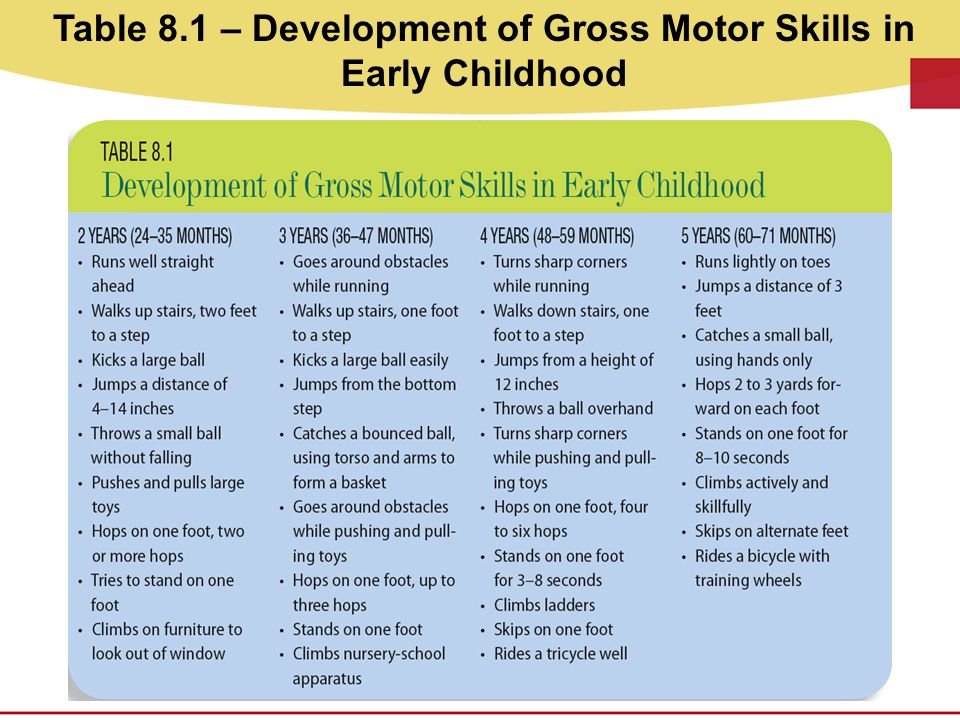 The good news: no special techniques, devices and additional education will be required - only desire and a positive attitude! nine0003
The good news: no special techniques, devices and additional education will be required - only desire and a positive attitude! nine0003
-
From a very early age, lay the baby on the stomach: thanks to this exercise, the muscles of the back and neck begin to work better. Help your child learn to turn over: lure with toys, affectionately call to you.
-
As soon as the child learns to roll over, transfer all developmental activities to the floor - both for safety reasons and so that the baby is surrounded by more incentives. In such conditions, the baby quickly learns new skills and develops existing ones. nine0003
-
Do the simplest gymnastics with your baby, exercise with a fitball, swim in the bathroom at home. The most elementary exercises are of great benefit for mastering the skills of large motor skills, positively affect the speed and quality of their development in children of primary preschool age.
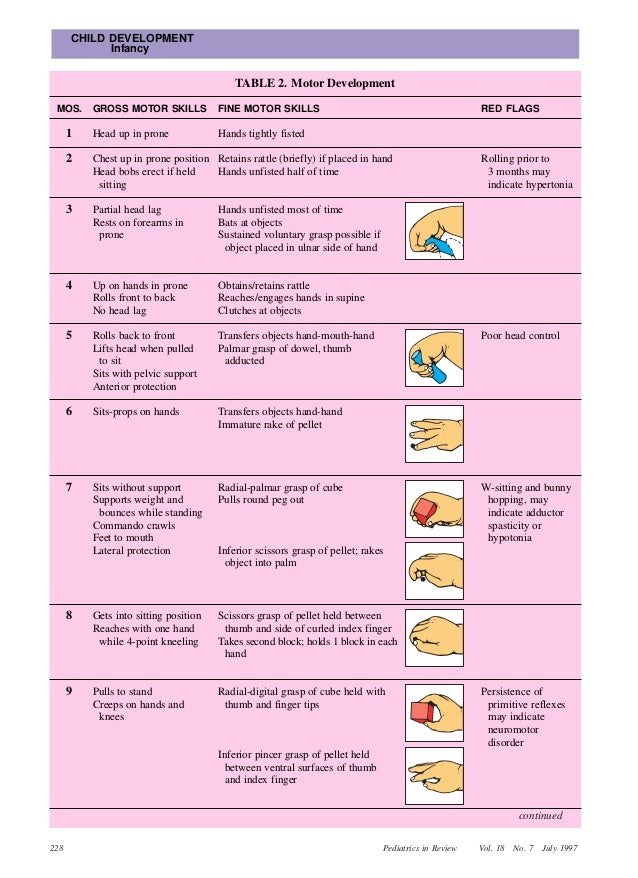
-
Try to minimize the freedom of the child at the time of mastering new movements: playpens, walkers, leashes for learning to walk - all these methods only hinder the development of the child. Encourage your baby to explore the house, climb all the stairs together on the playground, come up with new games. Use the word "no" only in case of real danger. nine0003
-
When the child grows up, dance with him, do exercises, play catch-up and other active games. These developmental activities in a non-intrusive way help the child to train his coordination and endurance.
-
Bicycle, scooter, balance bike. Items that are different in principle of work, but similar in purpose, will help diversify walks, as well as teach you how to coordinate the actions of the limbs. And this is not the only benefit of such activities for development. Fans of these vehicles have better developed interhemispheric interaction in the brain, which affects speech and intellectual abilities.
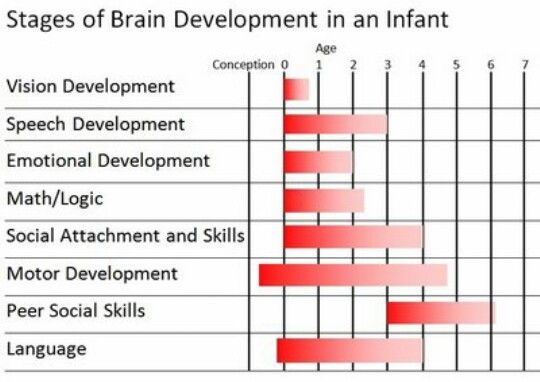 nine0003
nine0003
How is the development of fine motor skills?
In parallel with large, fine motor skills are developing. Thanks to the subtle and coordinated actions of the muscles of the hand (and the foot, by the way, in some cases), we hold a spoon in our hands, brush our teeth, write, cut with scissors, braid braids and do a huge number of other things. The level of development of fine motor skills in preschool children is inextricably linked with such higher mental functions as attention, thinking, memory, speech, and imagination. The formation, improvement and correction of these skills occur in the process of our development, day by day. nine0003
The movements of the fingers and toes of a newborn are due to congenital conditioned reflexes. For example, if an adult puts his finger from the palm of a baby, he will grab it (grasping reflex). The fact is that this action is performed unconsciously, reflexively, because millions of years ago it was vital for human ancestors - this is how monkey cubs were kept on their mother's fur.
After 2-3 months, the child begins to try to coordinate hand movements and subject them to visual control. Now he is learning to consciously take and hold in his hands objects that interest him. nine0003
Closer to 6 months, the baby becomes available to transfer an object from one hand to another. The next stage in the development of fine motor skills is the development of first a pincer grip (thumb, index and middle fingers), and then a pinch grip (thumb and forefinger).
Fine motor skills are rapidly improving in the early preschool years. From a year to two, a child begins not only to take and hold objects, but also to study them, evaluate their characteristics: shape, size, weight, texture. Later, the child learns how to control the objects he holds in his hand (dynamic grip) - he tries to hold a pencil in his hand and draw with it, use scissors, assemble mosaics, fasten buttons, etc. nine0003
How to develop fine motor skills?
At all stages of the development of fine motor skills, starting from birth, parents can help the baby.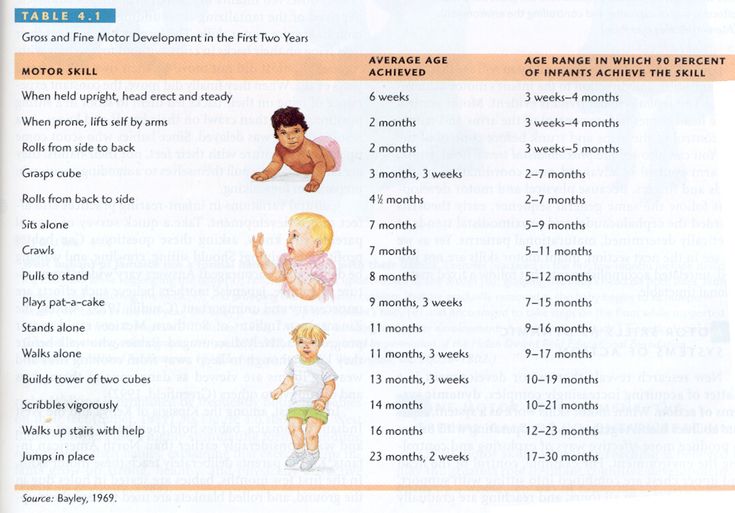
-
Even at a very early age, one should not think about why developing fine motor skills is always useful. Babies can knead their palms, massage their hands, play finger games (for example, “Forty-White-sided”). Smile to the baby, talk to him, sing songs - these simple developmental activities will not only be useful, but also pleasant for the baby. nine0003
-
From birth, put toys of various textures and materials into the baby's hand: wood, plastic, wool, cotton, etc.
-
After 8–9 months, bodyboards and sorters become the most favorite entertainment for children. With the help of these games, enthusiastic children of primary preschool age not only develop subtle purposeful movements, but also give mothers the opportunity to drink a cup of coffee. nine0003
-
From about a year old, to develop fine motor skills, you can try to draw with finger paints and sculpt from dough.
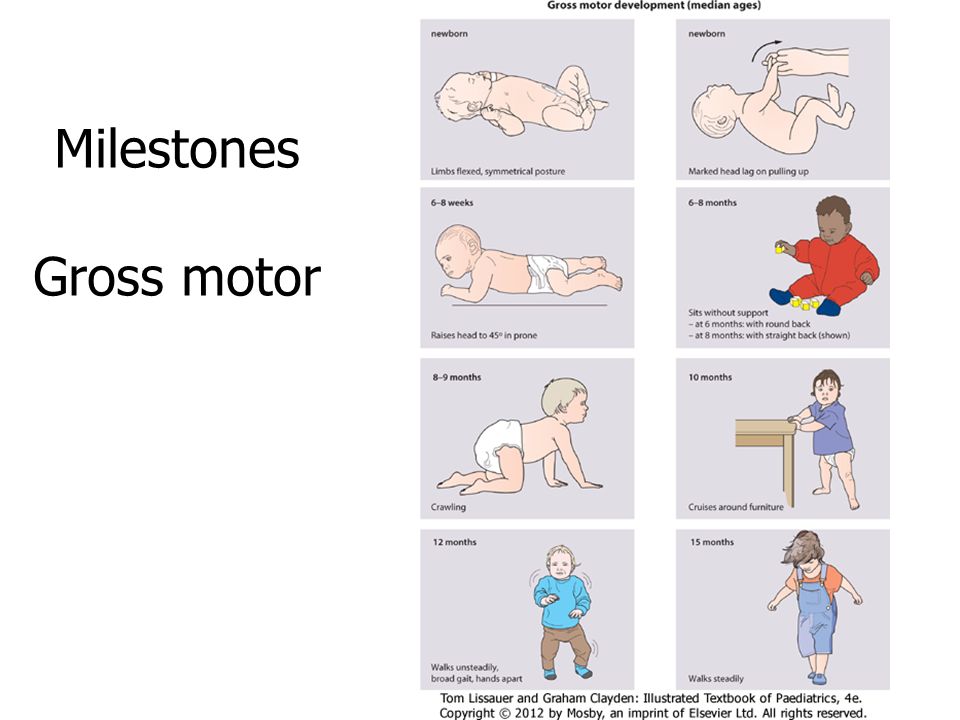
-
With older children, you can make crafts from paper, cardboard, natural materials; learn to cut with scissors. Also for preschool children, a great way to develop fine motor skills is picking up puzzles and mosaics.
-
Encourage the child's interest in pencils and pens: as soon as the baby reaches for them, try to correctly put these objects in the child's hand and show that they can draw with them. Writing and drawing are great for developing baby's fine motor skills. nine0003
-
Teach your child how to tie shoelaces and fasten buttons.
How to make toys for children with your own hands, read this article.
Can poorly developed motor skills indicate health problems?
All children are individual, the pace of development of each is also different. It is impossible to judge the state of health in general and the psyche in particular by one of the skills (no matter, large or small motor skills), much less begin to correct them.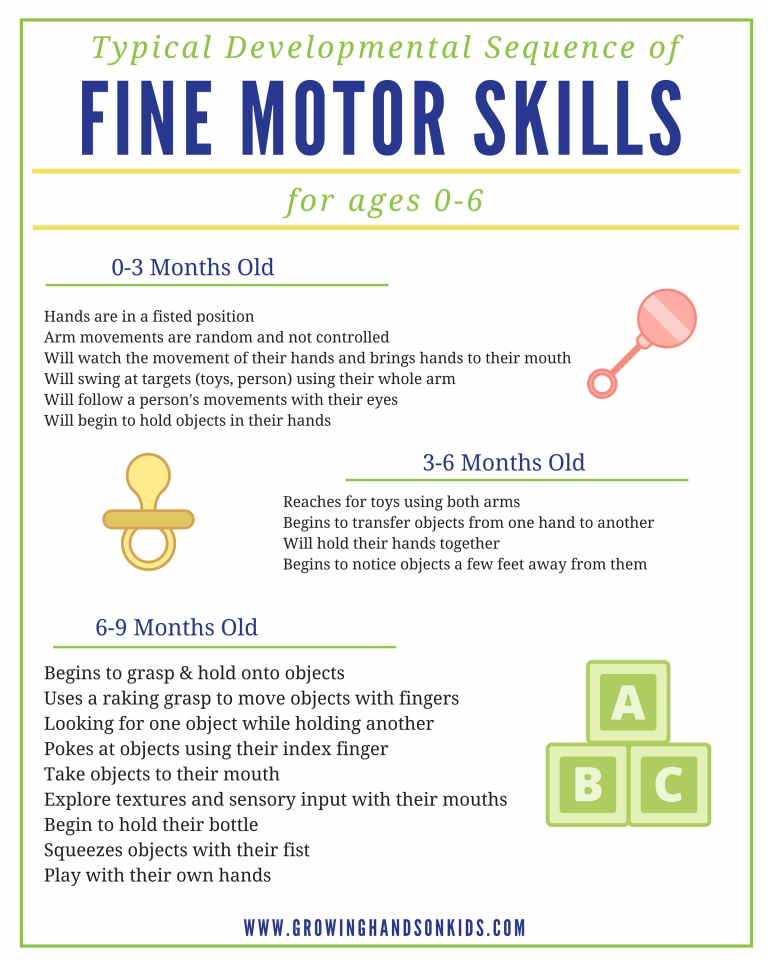 There are many factors to consider when evaluating a child's developmental level. nine0003
There are many factors to consider when evaluating a child's developmental level. nine0003
If a young child has a burdened history (difficult pregnancy or childbirth in a mother, prematurity, infections in the first months of life, etc.), then a delay in mastering one or another skill of gross or fine motor skills may indicate certain developmental disorders. In the absence of risk factors, most likely, slower mastering of movements is associated with individual characteristics. But in any case, if fears or questions arise, you need to contact the specialists. Only a professional can determine the problem and how to correct it. nine0003
Links to sources:
-
https://pathways.org/topics-of-development/motor-skills/
-
https://www.inspiro.org.au/blog/improve-your-childs-fine-motor-skills
-
https://www.defectologiya.pro/zhurnal/razvitie_melkoj_motoriki_ruk_u_detej_rannego_vozrasta/
-
https://www.
